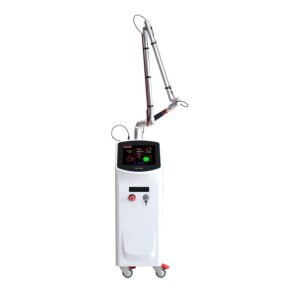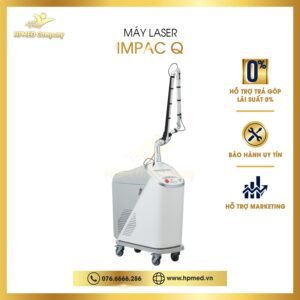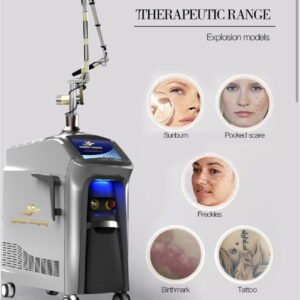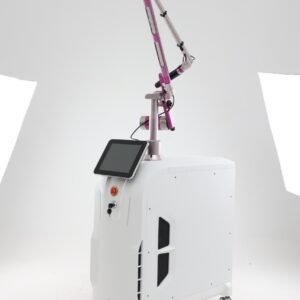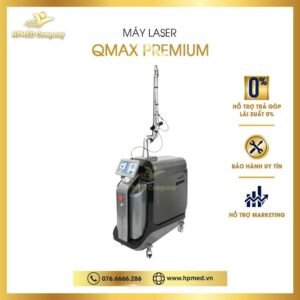Tattoo Removal Machines
Top 10. Tattoo Removal Laser Machines A Comprehensive Guide
In the ever-evolving world of body art, tattoos have become an increasingly popular form of self-expression. However, as tastes and preferences change over time, the desire to remove or modify these permanent markings has also grown. Fortunately, the advancements in laser technology have made tattoo removal a more accessible and effective option for individuals seeking to erase or lighten their unwanted ink.
Choosing the Right Laser for Your Needs: Factors to Consider
When it comes to selecting the appropriate laser for tattoo removal, there are several critical factors to consider. These include the type of ink used in the tattoo, the color of the ink, the age of the tattoo, and the individual’s skin tone. Understanding these variables is crucial in ensuring a successful and safe removal process.
Types of Tattoo Ink
Tattoo inks come in a wide variety of colors, each with its own unique chemical composition. The type of ink used in the tattoo can significantly impact the effectiveness of the laser treatment. For example, some inks, such as those containing metal particles, can be more challenging to remove, requiring specialized laser technology.
Tattoo Color
The color of the tattoo is another important factor in choosing the right laser. Different wavelengths of light are needed to target specific pigment colors. Lasers with multiple wavelengths, such as the Q-switched Nd:YAG laser, are often the most versatile in addressing a wide range of tattoo colors.
Age of the Tattoo
The age of the tattoo can also influence the success of the removal process. Newer tattoos tend to have more vibrant colors and are generally easier to remove, as the ink particles are still relatively large and concentrated. Older tattoos, on the other hand, may have faded or become more dispersed, making them more challenging to target with laser treatment.
Skin Tone
The skin tone of the individual is another crucial factor in selecting the appropriate laser for tattoo removal. Lasers with specific wavelengths are designed to target the pigment in the skin while minimizing the risk of unwanted side effects, such as hypopigmentation or hyperpigmentation. Consulting with a qualified practitioner is essential to ensure the laser treatment is tailored to the individual’s skin type and tattoo characteristics.
Understanding Laser Technology for Tattoo Removal
Laser technology has revolutionized the field of tattoo removal, offering a more effective and safer alternative to traditional methods, such as surgical excision or dermabrasion. The key to successful tattoo removal lies in the ability of the laser to target and break down the ink particles within the skin, allowing the body’s immune system to naturally flush them out.
Q-Switched Lasers
Q-switched lasers are the most commonly used technology for tattoo removal. These lasers emit short, high-energy pulses of light that can effectively target and shatter the ink particles within the skin. The Q-switched Nd:YAG laser, which can emit light at both 1064nm and 532nm wavelengths, is particularly versatile in addressing a wide range of tattoo colors.
Picosecond Lasers
More recently, picosecond lasers have emerged as a newer and more advanced option for tattoo removal. These lasers deliver even shorter, more powerful pulses of light, which can more effectively break down the ink particles into smaller fragments that are more easily absorbed and eliminated by the body.
Combination Laser Treatments
In some cases, a combination of different laser technologies may be used to achieve the best results. For example, a Q-switched laser may be used in conjunction with a picosecond laser to target a specific tattoo color or to address a tattoo that has proven resistant to a single laser type.
Laser Safety and Regulations
When it comes to laser tattoo removal, safety is of the utmost importance. Laser treatments should only be performed by qualified and licensed practitioners who have received proper training in the use of these devices. Regulations and safety standards vary by location, so it is crucial to research the local requirements and ensure that the chosen practitioner is fully compliant.
The Top 10 Laser Machines for Tattoo Removal: A Detailed Review
In the ever-expanding landscape of tattoo removal technology, there are numerous laser machines available on the market, each with its own unique features and capabilities. To help you navigate this vast array of options, we have compiled a comprehensive review of the top 10 laser machines for tattoo removal.
1. PicoSure by Cynosure
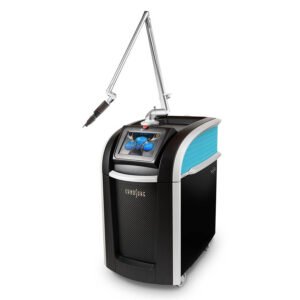
The PicoSure by Cynosure is a revolutionary picosecond laser that utilizes a proprietary Focus Lens Array to deliver energy more efficiently, resulting in faster and more effective tattoo removal. With its ability to target a wide range of pigment colors, the PicoSure is a versatile choice for practitioners.
2. Enlighten III by Cutera

The Enlighten III by Cutera is a dual-wavelength laser system that combines both Q-switched and picosecond technologies. This advanced laser is capable of removing even the most stubborn tattoos, including those with difficult-to-target colors, such as blues and greens.
3. Pico Genesis by Cutera

The Pico Genesis by Cutera is a versatile picosecond laser that can be used for both tattoo removal and laser skin rejuvenation. Its advanced technology allows for the effective breakdown of ink particles while minimizing the risk of adverse effects.
4. Discovery Pico by Quanta System
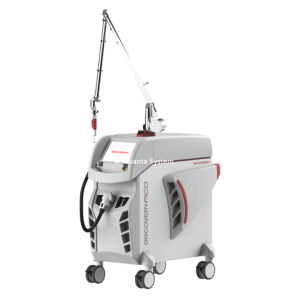
The Discovery Pico by Quanta System is a powerful picosecond laser that offers exceptional performance in tattoo removal. With its ability to deliver high-energy pulses and multiple wavelength options, the Discovery Pico is well-suited for addressing a wide range of tattoo colors and skin types.
5. Spectra XT by Lutronic
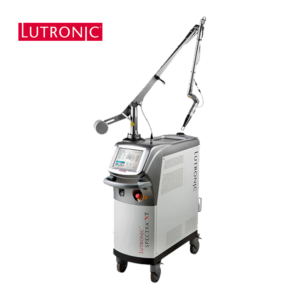
The Spectra XT by Lutronic is a versatile Q-switched laser system that can be used for both tattoo removal and laser pigment treatment. Its advanced technology and user-friendly interface make it a popular choice among practitioners.
6. PicoWay by Candela

The PicoWay by Candela is a state-of-the-art picosecond laser that offers exceptional performance in tattoo removal. Its advanced technology and ability to target a wide range of pigment colors make it a highly sought-after option in the industry.
7. Revlite SI by Cynosure

The Revlite SI by Cynosure is a Q-switched Nd:YAG laser that has been specifically designed for the effective removal of tattoos. Its versatility and proven track record have made it a trusted choice among practitioners.
8. Picoway by Candela

The Picoway by Candela is a cutting-edge picosecond laser that combines advanced technology with user-friendly features. Its ability to target a wide range of tattoo colors and its efficient energy delivery make it a popular option for tattoo removal.
9. Pico Plus by Lutronic

The Pico Plus by Lutronic is a high-performance picosecond laser that offers exceptional results in tattoo removal. Its advanced technology and customizable settings allow practitioners to tailor the treatment to the individual’s needs.
10. LightSense by Astanza
The LightSense by Astanza is a versatile Q-switched laser system that can be used for both tattoo removal and laser pigment treatment. Its user-friendly interface and reliable performance make it a solid choice for practitioners.
Safety and Effectiveness of Laser Tattoo Removal
Laser tattoo removal is generally considered a safe and effective procedure when performed by a qualified and experienced practitioner. However, it is essential to understand the potential risks and side effects associated with this treatment.
Potential Risks and Side Effects
The most common side effects of laser tattoo removal include temporary swelling, redness, and mild discomfort or pain during the procedure. In rare cases, more serious side effects, such as hypopigmentation, hyperpigmentation, or scarring, may occur. Proper aftercare and follow-up with the practitioner are crucial to minimize these risks.
Effectiveness of Laser Tattoo Removal
The effectiveness of laser tattoo removal can vary depending on several factors, including the type of tattoo ink, the color of the tattoo, and the individual’s skin type. In general, laser treatments are most effective in removing darker, more vibrant tattoos, while lighter or more faded tattoos may require a greater number of treatment sessions to achieve the desired results.
Factors Affecting Tattoo Removal
The success of laser tattoo removal can be influenced by the size and location of the tattoo, the age of the tattoo, and the individual’s skin type and healing response. Larger tattoos, those located on areas with poor blood circulation (such as the extremities), and older tattoos may require more treatment sessions to achieve complete or satisfactory removal.
Importance of Consulting a Qualified Practitioner
To ensure the safety and effectiveness of laser tattoo removal, it is essential to consult with a qualified and experienced practitioner. These professionals have the necessary training, expertise, and equipment to properly assess the tattoo, select the appropriate laser technology, and administer the treatment in a safe and effective manner.
Cost and Treatment Sessions: What to Expect
The cost of laser tattoo removal can vary significantly depending on several factors, including the size and complexity of the tattoo, the number of treatment sessions required, and the geographic location of the clinic. Understanding the expected costs and treatment plan can help individuals budget and plan accordingly.
Factors Influencing Tattoo Removal Cost
The size of the tattoo is a significant factor in determining the cost of laser removal. Larger tattoos generally require more laser pulses and treatment sessions, resulting in a higher overall cost. The complexity of the tattoo, including the number of colors and the depth of the ink, can also impact the cost.
Average Cost of Tattoo Removal
The average cost of laser tattoo removal can range from $200 to $500 per treatment session, with larger or more complex tattoos potentially costing significantly more. It is important to note that multiple treatment sessions are usually required to achieve the desired results, so the total cost can add up quickly.
Number of Treatment Sessions
The number of treatment sessions required for complete tattoo removal can vary widely, depending on the factors mentioned above. In general, most tattoos require between 6 and 12 treatment sessions, spaced several weeks apart, to achieve satisfactory results. Some particularly stubborn or complex tattoos may require even more treatments.
Payment Options and Financing
Many tattoo removal clinics offer payment plans or financing options to help patients manage the cost of treatment. These may include options such as installment payments, medical credit cards, or partnerships with financing companies. Consulting with the clinic about available payment options can help individuals plan and budget for their tattoo removal procedure.
Finding a Qualified Practitioner: Tips for Choosing a Clinic
When it comes to laser tattoo removal, choosing the right practitioner and clinic is crucial. The success and safety of the procedure depend heavily on the expertise and experience of the provider, as well as the quality of the equipment and facilities.
Credentials and Experience
When selecting a tattoo removal clinic, it is essential to ensure that the practitioner is properly licensed and has extensive experience in performing laser treatments. Look for providers who are certified by recognized medical or aesthetic organizations, and inquire about their specific training and expertise in tattoo removal.
Equipment and Facility
The type of laser technology and equipment used by the clinic can also impact the effectiveness and safety of the procedure. Reputable clinics should use state-of-the-art, FDA-approved laser systems and maintain a clean, well-equipped facility that adheres to strict safety and hygiene standards.
Patient Reviews and Testimonials
Checking online reviews and testimonials from previous patients can provide valuable insight into the quality of care and customer satisfaction at a particular tattoo removal clinic. Look for clinics with consistently positive feedback and a track record of successful outcomes.
Consultation and Treatment Plan
Before undergoing any laser tattoo removal procedure, it is essential to schedule a consultation with the practitioner. During this consultation, the provider should thoroughly evaluate the tattoo, discuss the treatment plan, and address any concerns or questions you may have. A reputable clinic will take the time to ensure that the treatment is tailored to your individual needs and expectations.
Aftercare and Follow-Up
Proper aftercare and follow-up are essential for achieving the best results and minimizing the risk of complications. Look for a clinic that provides detailed instructions for post-treatment care and schedules regular follow-up appointments to monitor the progress and address any issues that may arise.
Alternatives to Laser Tattoo Removal
While laser tattoo removal is the most common and effective method for removing unwanted ink, there are alternative options available for individuals who may not be suitable candidates for laser treatment or prefer a different approach.
Surgical Excision
Surgical excision, also known as surgical removal, involves the physical removal of the tattooed skin by a qualified surgeon. This method is typically reserved for small, localized tattoos and may leave a visible scar.
Dermabrasion
Dermabrasion is a mechanical exfoliation technique that uses a rotating abrasive device to remove the top layers of the skin, including the tattooed area. This method can be effective for some tattoos but may result in scarring and pigmentation changes.
Chemical Peels
Chemical peels, such as those containing trichloroacetic acid (TCA) or salicylic acid, can help break down and remove the top layers of the skin, including tattoo pigments. However, this method is generally less effective than laser treatment and may cause irritation or discoloration.
Tattoo Removal Creams
Over-the-counter tattoo removal creams and gels claim to fade or lighten tattoos through the use of various chemicals and ingredients. While these products may have some mild fading effects, they are generally not as effective as professional laser treatments and may carry a higher risk of adverse reactions.
Tattoo Cover-Up or Camouflage
For individuals who do not wish to fully remove their tattoos, the option of covering up or camouflaging the existing ink with a new tattoo design may be considered. This approach can be a viable alternative for those who have sentimental or meaningful tattoos they wish to retain in a more visually appealing manner.
Preparing for and Aftercare of Laser Tattoo Removal
Proper preparation and aftercare are crucial for ensuring a successful and safe laser tattoo removal experience. Adhering to the instructions provided by the practitioner is essential to minimize the risk of complications and optimize the outcome of the treatment.
Preparing for Laser Tattoo Removal
Before the procedure, patients may be asked to avoid sun exposure, refrain from using certain medications or skincare products, and maintain good hygiene in the treatment area. It is also important to discuss any underlying medical conditions or allergies with the practitioner to ensure the safety of the treatment.
Aftercare Instructions
Following the laser treatment, patients will typically be provided with detailed aftercare instructions, which may include the application of topical ointments, the use of cold compresses, and the avoidance of certain activities or products. Adhering to these instructions is crucial for promoting proper healing, reducing the risk of complications, and achieving the best possible results.
Potential Side Effects and Complications
Despite the general safety of laser tattoo removal, there are potential side effects and complications that patients should be aware of, such as swelling, redness, blistering, or changes in skin pigmentation. Reporting any concerning symptoms to the practitioner promptly is essential for proper management and prevention of further complications.
Monitoring and Follow-Up
Regular follow-up appointments with the practitioner are essential for monitoring the progress of the tattoo removal and addressing any issues that may arise. These appointments allow the practitioner to assess the healing process, evaluate the need for additional treatments, and provide ongoing support and guidance to the patient.
The Future of Tattoo Removal: Emerging Technologies
As the demand for tattoo removal continues to grow, researchers and innovators are constantly exploring new and more advanced technologies to improve the effectiveness, safety, and accessibility of this treatment.
Plasma Skin Regeneration
One emerging technology in the field of tattoo removal is plasma skin regeneration. This technique uses a plasma energy device to vaporize the tattooed skin, allowing for the gradual removal of the ink without the need for laser technology.
Tattoo-Specific Nanoparticles
Another promising development in tattoo removal is the use of tattoo-specific nanoparticles. These nanoparticles are designed to specifically target and break down tattoo pigments, potentially offering a more selective and effective alternative to traditional laser treatments.
Combination Therapies
The future of tattoo removal may also involve the use of combination therapies, where multiple technologies or treatments are used in a coordinated approach to achieve the best possible results. For example, the use of laser treatment in conjunction with topical creams or other complementary therapies may enhance the overall effectiveness of the removal process.
Personalized Approaches
As the field of tattoo removal continues to evolve, practitioners and researchers are also exploring more personalized approaches to treatment. This may include the development of customized laser settings or the use of advanced imaging and diagnostic tools to tailor the treatment plan to the individual’s unique tattoo characteristics and skin type.
Increased Accessibility
Finally, the future of tattoo removal may also involve increased accessibility and affordability. As new technologies emerge and the demand for these services grows, it is possible that the cost of tattoo removal treatments may become more competitive, making them more accessible to a wider range of individuals. Additionally, advancements in technology may lead to the development of portable or at-home tattoo removal devices, allowing for greater convenience and flexibility in the removal process.
In conclusion, laser tattoo removal is a safe and effective method for removing unwanted ink, with a variety of advanced technologies and options available to suit individual needs. By understanding the factors to consider when choosing a laser machine, the technology behind tattoo removal, and the alternatives and future developments in the field, individuals can make informed decisions about their tattoo removal journey. Proper preparation, aftercare, and ongoing communication with a qualified practitioner are essential for achieving optimal results and ensuring a successful outcome. As technology continues to advance, the future of tattoo removal looks promising, with the potential for more personalized, effective, and accessible treatment options on the horizon. Whether you are considering tattoo removal for aesthetic, professional, or personal reasons, taking the time to research and consult with a reputable practitioner will help you navigate the process with confidence and achieve the desired results.
Tattoo removal has become increasingly popular as more individuals seek to eliminate unwanted ink for various reasons. Laser technology is the most common and effective method for tattoo removal, offering safe and efficient results. Choosing the right laser machine is crucial for achieving optimal outcomes. In this comprehensive guide, we will explore the top 10 tattoo removal laser machines, factors to consider when selecting a laser, and the safety and effectiveness of laser tattoo removal.
Choosing the Right Laser for Your Needs: Factors to Consider
When selecting a laser machine for tattoo removal, several factors should be taken into account to ensure the best possible results.
Skin Type and Tattoo Color
Different lasers are designed to target specific colors of tattoo ink, so the type of laser needed will depend on the colors present in the tattoo. Additionally, the patient’s skin type plays a role in determining the appropriate laser settings to minimize the risk of adverse effects.
Treatment Efficiency and Speed
The efficiency and speed of the laser machine are important considerations, especially for patients with larger or more complex tattoos. High-powered lasers with shorter pulse durations can provide faster treatment times and better results in fewer sessions.
Practitioner Experience and Training
The experience and training of the practitioner operating the laser machine are critical factors in the success of tattoo removal treatments. Ensure that the clinic or practitioner has the necessary expertise and certifications to perform laser procedures safely and effectively.
Cost and Accessibility
The cost of laser tattoo removal treatments can vary depending on the size and complexity of the tattoo, as well as the number of sessions required. Consider the overall cost of the treatment, including any additional fees or aftercare products, and ensure that the clinic is easily accessible for regular appointments.
Understanding Laser Technology for Tattoo Removal
Laser technology works by delivering high-intensity light energy to the tattooed skin, which breaks down the ink particles into smaller fragments that can be naturally eliminated by the body’s immune system. Different types of lasers, such as Q-switched Nd:YAG and picosecond lasers, target specific colors of ink and penetrate different depths of the skin to effectively remove tattoos.
Q-Switched Lasers
Q-switched lasers are the most commonly used devices for tattoo removal due to their ability to produce short, high-energy pulses of light that shatter tattoo pigments without causing damage to the surrounding skin. These lasers are effective for targeting dark ink colors like black and blue.
Picosecond Lasers
Picosecond lasers are newer technology that delivers ultra-short pulses of energy in picoseconds (trillionths of a second), resulting in faster and more efficient tattoo removal. These lasers are particularly effective for removing stubborn or multicolored tattoos that may not respond well to traditional Q-switched lasers.
Alexandrite and Ruby Lasers
Alexandrite and ruby lasers are also used for tattoo removal, although they are less commonly utilized compared to Q-switched and picosecond lasers. These devices emit specific wavelengths of light that target different colors of tattoo ink, making them suitable for a broader range of pigments.
Fractional Lasers
Fractional lasers work by creating microscopic treatment zones in the skin, stimulating collagen production and accelerating the natural healing process. While not specifically designed for tattoo removal, fractional lasers can help improve the appearance of tattooed skin by reducing scarring and promoting tissue regeneration.
The Top 10 Laser Machines for Tattoo Removal: A Detailed Review
- Quanta Q-Plus C: Known for its versatility and effectiveness in removing a wide range of tattoo colors, the Quanta Q-Plus C features three true laser wavelengths and multiple handpieces for customized treatments.
- CynoSure PicoSure: Utilizing picosecond technology, the CynoSure PicoSure offers fast and efficient tattoo removal with minimal discomfort and downtime, making it ideal for busy individuals.
- Astanza Duality: With dual wavelengths and high peak power, the Astanza Duality is capable of targeting both amateur and professional tattoos across various skin types, delivering impressive results.
- Cutera Enlighten: Featuring dual pulse durations and multiple spot sizes, the Cutera Enlighten is renowned for its ability to treat a wide range of tattoo colors and depths with minimal risk of side effects.
- Lutronic Spectra XT: Offering four distinct Q-switched wavelengths, the Lutronic Spectra XT provides customizable treatments for different ink colors and skin types, ensuring precise and effective tattoo removal.
- Syneron-Candela PicoWay: Utilizing advanced picosecond technology, the Syneron-Candela PicoWay delivers rapid and comfortable tattoo removal for various ink colors, including resistant pigments.
- Quanta Discovery Pico: Equipped with picosecond and nanosecond capabilities, the Quanta Discovery Pico offers versatile and efficient tattoo removal for all skin types, including darker skin tones.
- Alma Harmony XL: Featuring multiple applicators and wavelengths, the Alma Harmony XL is a versatile platform for tattoo removal, skin rejuvenation, and other aesthetic treatments with minimal discomfort.
- Asclepion DermaBlate: Combining Er:YAG and Nd:YAG lasers, the Asclepion DermaBlate offers precise and effective tattoo removal with customizable settings for optimal results and patient comfort.
- Fotona QX MAX: Known for its high peak power and four wavelengths, the Fotona QX MAX is a reliable choice for tattoo removal, providing fast and efficient treatments with minimal risk of scarring or pigment changes.
Safety and Effectiveness of Laser Tattoo Removal
Laser tattoo removal is generally safe and effective when performed by a trained and experienced practitioner using appropriate equipment. However, there are certain risks and considerations to keep in mind before undergoing treatment.
Skin Sensitivity and Reactions
Some individuals may experience mild redness, swelling, or blistering after laser tattoo removal, which typically subsides within a few days. Patients with sensitive skin or a history of allergic reactions should inform their practitioner to minimize the risk of adverse effects.
Risk of Scarring and Hyperpigmentation
While modern laser technology has significantly reduced the risk of scarring and hyperpigmentation, these potential complications can still occur, especially if the treatment is not administered correctly or if the patient does not follow proper aftercare instructions.
Multiple Sessions and Healing Time
Complete tattoo removal usually requires multiple treatment sessions spaced several weeks apart to allow the skin to heal and the immune system to eliminate the fragmented ink particles. Patience and adherence to the recommended treatment plan are essential for achieving optimal results.
Consultation and Patch Testing
Before starting laser tattoo removal, patients should undergo a thorough consultation with the practitioner to discuss their medical history, treatment goals, and expectations. Patch testing may also be performed to assess the skin’s reaction to the laser and determine the most appropriate settings for the procedure.
Cost and Treatment Sessions: What to Expect
The cost of laser tattoo removal can vary depending on various factors, including the size and complexity of the tattoo, the number of sessions required, and the technology used. On average, each session can range from $200 to $500 or more, with complete removal often taking between 5 to 15 sessions spread out over several months.
Pricing Structure and Packages
Many clinics offer pricing structures and treatment packages that can help reduce the overall cost of laser tattoo removal. Some facilities may provide discounts for prepaid sessions or bundle multiple treatments together for a more cost-effective solution.
Insurance Coverage
In most cases, laser tattoo removal is considered a cosmetic procedure and is not covered by health insurance. However, some exceptions may apply if the tattoo is associated with a medical condition or trauma, so it is advisable to check with your insurance provider for clarification.
Additional Costs and Aftercare Products
In addition to the cost of the laser treatments, patients should budget for additional expenses such as aftercare products, topical ointments, and sunscreen to protect the treated area. Proper skincare and maintenance are essential for promoting healing and preventing complications.
Financing Options and Payment Plans
To make laser tattoo removal more affordable, many clinics offer financing options and payment plans that allow patients to spread out the cost of treatment over time. CareCredit and other medical financing companies may also provide flexible payment solutions for qualifying individuals.
Finding a Qualified Practitioner: Tips for Choosing a Clinic
Selecting a reputable and qualified practitioner for laser tattoo removal is crucial for ensuring a safe and successful treatment experience. Here are some tips to help you choose the right clinic for your needs.
Credentials and Experience
Research the credentials and experience of the practitioner performing the laser treatments. Look for board-certified dermatologists or plastic surgeons with specialized training in laser procedures and a track record of successful tattoo removal.
Facility Accreditation and Safety Standards
Ensure that the clinic or medspa where you plan to undergo laser tattoo removal adheres to strict safety standards and regulations. Accredited facilities are more likely to maintain high levels of cleanliness, professionalism, and patient care.
Patient Reviews and Testimonials
Read online reviews and testimonials from previous patients to gauge the reputation and satisfaction level of the clinic. Positive feedback and before-and-after photos can provide valuable insights into the quality of care and results you can expect.
Consultation and Communication
Schedule a consultation with the practitioner to discuss your treatment goals, concerns, and expectations. A good practitioner will take the time to listen to your needs, answer any questions you may have, and provide realistic recommendations based on your individual circumstances.
Alternatives to Laser Tattoo Removal
While laser tattoo removal is the most effective method for eliminating unwanted ink, there are alternative approaches that individuals may consider depending on their preferences and circumstances.
Tattoo Removal Creams and Gels
Over-the-counter tattoo removal creams and gels claim to fade or lighten tattoos through the use of various chemicals and ingredients. While these products may have some mild fading effects, they are generally not as effective as professional laser treatments and may carry a higher risk of adverse reactions.
Tattoo Cover-Up or Camouflage
For individuals who do not wish to fully remove their tattoos, the option of covering up or camouflaging the existing ink with a new tattoo design may be considered. This approach can be a viable alternative for those who have sentimental or meaningful tattoos they wish to retain in a more visually appealing manner.
Preparing for and Aftercare of Laser Tattoo Removal
Proper preparation and aftercare are crucial for ensuring a successful and safe laser tattoo removal experience. Adhering to the instructions provided by the practitioner is essential to minimize the risk of complications and optimize the outcome of the treatment.
Preparing for Laser Tattoo Removal
Before the procedure, patients may be asked to avoid sun exposure, refrain from using certain medications or skincare products, and maintain good hygiene in the treatment area. It is also important to discuss any underlying medical conditions or allergies with the practitioner to ensure the safety of the treatment.
Aftercare Instructions
Following the laser treatment, patients will typically be provided with detailed aftercare instructions, which may include the application of topical ointments, the use of cold compresses, and the avoidance of certain activities or products. Adhering to these instructions is crucial for promoting proper healing, reducing the risk of complications, and achieving the best possible results.
Potential Side Effects and Complications
Despite the general safety of laser tattoo removal, there are potential side effects and complications that patients should be aware of, such as swelling, redness, blistering, or changes in skin pigmentation. Reporting any concerning symptoms to the practitioner promptly is essential for proper management and prevention of further complications.
Monitoring and Follow-Up
Regular follow-up appointments with the practitioner are essential for monitoring the progress of the tattoo removal and addressing any issues that may arise. These appointments allow the practitioner to assess the healing process, evaluate the need for additional treatments, and provide ongoing support and guidance to the patient.
The Future of Tattoo Removal: Emerging Technologies
As the demand for tattoo removal continues to grow, researchers and innovators are constantly exploring new and more advanced technologies to improve the effectiveness, safety, and accessibility of this treatment.
Plasma Skin Regeneration
One emerging technology in the field of tattoo removal is plasma skin regeneration. This technique uses a plasma energy device to vaporize the tattooed skin, allowing for the gradual removal of the ink without the need for laser technology.
Tattoo-Specific Nanoparticles
Another promising development in tattoo removal is the use of tattoo-specific nanoparticles. These nanoparticles are designed to specifically target and break down tattoo pigments, potentially offering a more selective and effective alternative to traditional laser treatments.
Combination Therapies
The future of tattoo removal may also involve the use of combination therapies, where multiple technologies or treatments are used in a coordinated approach to achieve the best possible results. For example, the use of laser treatment in conjunction with topical creams or other complementary therapies may enhance the overall effectiveness of the removal process.
Personalized Approaches
As the field of tattoo removal continues to evolve, practitioners and researchers are also exploring more personalized approaches to treatment. This may include the development of customized laser settings or the use of advanced imaging and diagnostic tools to tailor the treatment plan to the individual’s unique tattoo characteristics and skin type.
Increased Accessibility
Finally, the future of tattoo removal may also involve increased accessibility and affordability. As new technologies emerge and the demand for these services grows, it is possible that the cost of tattoo removal treatments may become more competitive, making them more accessible to a wider range of individuals. Additionally, advancements in technology may lead to the development of portable or at-home tattoo removal devices, allowing for greater convenience and flexibility in the removal process.
Conclusion
In conclusion, laser tattoo removal is a safe and effective method for removing unwanted ink, with a variety of advanced technologies and options available to suit individual needs. By understanding the factors to consider when choosing a laser machine, the technology behind tattoo removal, and the alternatives and future developments in the field, individuals can make informed decisions about their tattoo removal journey. Proper preparation, aftercare, and ongoing communication with a qualified practitioner are essential for achieving optimal results and ensuring a successful outcome. As technology continues to advance, the future of tattoo removal looks promising, with the potential for more personalized, effective, and accessible treatment options on the horizon. Whether you are considering tattoo removal for aesthetic, professional, or personal reasons, taking the time to research and consult with a reputable practitioner will help you navigate the process with confidence and achieve the desired results.
Showing all 8 results
-
Tattoo Removal Machines
Activo Tattoo Removal and Melasma Treatment Machine
Original price was: $37,400.00.$34,600.00Current price is: $34,600.00. -
Tattoo Removal Machines
Impac Q Laser Tattoo Removal Machine
Original price was: $35,440.00.$34,000.00Current price is: $34,000.00. -
Tattoo Removal Machines
INVESTA NG YAG QSWITCH High-End Korean Laser Machine
Original price was: $46,000.00.$42,000.00Current price is: $42,000.00. -
Tattoo Removal Machines
PICOHOLIC GTG Wellness Melasma Treatment Laser Machine
Original price was: $106,000.00.$100,000.00Current price is: $100,000.00. -
Tattoo Removal Machines
Picosecond Laser Machine for Tattoo Removal and Melasma Treatment
Original price was: $10,600.00.$9,800.00Current price is: $9,800.00. -
Tattoo Removal Machines
Picosecond Naris Laser tattoo removal and melasma treatment
Original price was: $13,000.00.$12,200.00Current price is: $12,200.00. -
Tattoo Removal Machines
Q-Max Premium Laser Tattoo Removal Machine
Original price was: $50,000.00.$48,000.00Current price is: $48,000.00. -
Tattoo Removal Machines
Qswitched ND: Yag Magnum Laser Tattoo Removal and Melasma Treatment Machine
Original price was: $50,000.00.$48,000.00Current price is: $48,000.00.

